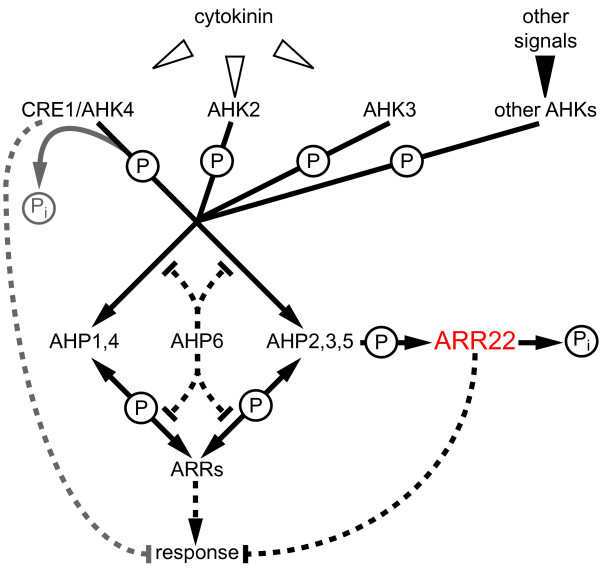Figure 10.
Model of ARR22 action within the two-component signalling network in transgenic Arabidopsis plants. Activation of the cytokinin receptors (AHK2 to 4) by cytokinin or other AHKs by their specific signal initiates a phosphorelay (drawn lines), which converges at the canonical AHPs (AHP1 to AHP5). Subsequently, the phosphoryl residues (P) are relayed to the A-type and B-type response regulator (ARRs), which are activiated by this phosphorylation and initiate the cellular responses (broken lines with arrow heads). Phosphorelay reactions catalyzed by receiver domains enable the phosphate flow in both directions. The phosphohistidine phosphatase ARR22 efficiently de-phosphorylates AHP2, 3 and 5, releases phosphate (Pi) and, therefore, acts a "sink" for phosphoryl residues. Especially in tissues, in which ARR22 is normally not expressed, this "sink" action strongly disturbs the phosphoload of the TCS network and interferes with TCS-regulated developmental processes (broken lines with vertical end line) causing dramatic phenotypic abnormalities. A similar "sink" function is reported for AHK4/CRE1 in the absence of cytokinin [47]. The pseudophosphotransfer protein AHP6 lacks the conserved His residue essential for phosphorelays and is proposed to inhibit the phosphate flow within the TCS network by competing with other AHPs for interactions with AHKs and ARRs [25].

